During the holiday season and as New Years Day approaches it’s that time again when we often look back at our accomplishments of the past year. 2011 was an unusual year for me. Several of the photos I took this year were in the traditional “grand landscape” style I’ve been used to shooting in over the years, but I’ve also noticed a growing personal urge to break out of my previous photographic patterns and try new, perhaps more artistic, techniques. These 10 photos (and several more images are available for viewing in the website’s New Photos Gallery) are examples of my “transitional” year. Here are my favorite photos from the past year in no particular order. I hope you enjoy them and I wish you a happy holiday season and successful 2012!
The wildflower bloom was wonderful this year in Crested Butte, Colorado. While a deep snowpack persisted in the highest alpine areas well into the summer, preventing flowers from growing in some of the region’s most popular spots, many of the lower elevation meadows were blanketed with remarkable amounts of colorful wildflowers instead. This image is my favorite shot from several days of photographing the area in late July. A rainstorm that had been raging since the previous evening dissipated leaving behind strings of clouds that glowed with the pink color of sunrise that morning. I was lucky to find a nice patch of arnica sunflowers under Gothic Mountain to create an interesting foreground.
One thing you can usually count on during a mid-winter visit to Rocky Mountain National Park is wind. I used a blustery day to my advantage in February by taking telephoto shots of clouds and snow swirling around the peaks of the Continental Divide from an overlook above Beaver Meadows. I liked how Longs Peak was framed by Pagoda Peak and Mount Lady Washington from this view. The snow clouds above worked well to complete the circle around the Longs summit. This photo was taken at about 11am. The light was becoming very bright washing out many of the colors of the scene. A black and white conversion seemed like a good choice to accentuate the layered tones of the mountains instead.
I wanted to try a few different photographic techniques during my yearly fall trip to the mountains of Colorado’s western slope. This is an example of several photos I took of aspen trees using in-camera blur. To create in-camera blur, set your camera for a slow shutter speed (usually you’ll also need a narrow aperture and slow ISO) and move the camera in a variety of motions while the shutter is open. No Photoshop filters are needed to create these dazzling effects which can resemble impressionist paintings. This photo is of an aspen stand along Crystal Lake near Red Mountain Pass and was taken at 1/1.3 second, at f/29 and ISO 100 (equivalent) while I was moving my camera lens in an upward motion.
In September I had an unusual opportunity to tour Square Tower House in Mesa Verde National Park. This site has never been open to the public before and, normally, the only way to view it is from an overlook above. This year the Mesa Verde Museum Association sold special tickets for a series of ranger-led tours to Square Tower as well as other park sites not previously open to the public. I jumped at the chance to explore this site up close and take photos from angles not possible to see from the small overlook. Check out the crow’s nest construction in the upper right corner! I was lucky during my visit that there was nice reddish light reflecting off of the opposite canyon wall that lit up the tower nicely too.
Nothing seems to get me out of bed early in the morning like the occurrence of a full moon setting over a mountain range at the same time the sun is rising in the opposite direction. On this July day, I got up before dawn to drive Trail Ridge Road in Rocky Mountain National Park and witness the full moon setting behind this view of the Never Summer Range. A panoramic created by merging seven different shots was the ideal technique to capture the sweeping view as pink alpenglow started moving its way down the high, snow-covered peaks. I have to thank Stephen Trainor for creating some great software, TPE, which allowed me to calculate where the moon would be setting that morning and pre-visualize this shot.
Some of this culture even sustain viagra shops in india until this modern society. The FDA has approved these pills as they are safer and affordable order cialis from india options. To attain optimum usefulness, use the medication cialis canada thirty minutes or else one hour before you plan to have it. Search engines advise that good marketing practises equate to good SEO, and that’s why they recommend you forget about buy viagra pill http://deeprootsmag.org/page/316/ over masturbation.
Judging from all of the snow in this photo you’d think it was taken in January or some other winter month. It was actually taken in late May. The Colorado mountains received a lot of the powdery white stuff this year that was slow to melt. I took this photo while hiking on Trail Ridge Road in Rocky Mountain National Park. The road was still closed above Many Parks Curve at the time while crews were plowing above in an attempt to open the road by Memorial Day. The road didn’t actually open until early June because of late season storms. I loved this aerial-perspective of the abstract-looking, curvy meanders of the Fall River, the red brush on the riverbanks and the coating of white snow.
This was taken on the same day as the Fall River Meanders photo above. It was getting close to sunset and the light lit up Twin Sisters Peak nicely making it look more like one of the mighty Cascade volcanoes in the northwest than a small mountain in the Rockies. A dark, new snowstorm was quickly moving in behind me. The wind was picking up and blowing the snow in streaks across the frame making the photo look like it was made with brushstrokes – kind of a cool effect. I only had a couple of minutes to set up and get this shot before it got too foggy, the snow became too thick and the light was lost on the mountain.
Some of the most enjoyable winter photography subjects are ice fracture abstracts. One of the more unusual formations I saw in February was from the popular Dream Lake in Rocky Mountain National Park. The deep fracture to the left seemed to glow with an almost neon-like aqua color under the surface. There was a myriad of tiny air bubbles surrounding it and the other less-defined fractures as well. Photographing in the early morning shade added to the ice’s already frigid blue color.
One of the best Colorado state parks to see fall foliage is Mueller near the town of Divide on the west side of Pikes Peak. I stopped here for the final afternoon of my yearly fall trip and was fortunate to experience a fast-moving thunderstorm that provided some dynamic lighting conditions. After weathering a downpour that lasted around an hour, I was pleased to see the clouds break and a rainbow form over an aspen stand along the Elk Meadow Trail with the edges of the Pikes Peak Massif in the background. It was a fortunate close to my autumn travels.
I spotted this fellow on the edge of Trail Ridge Road in Rocky Mountain National Park early one morning. The sun was just beginning to rise over a mountain ridge to the left of the frame creating some sweet warm light that spotlighted the elk’s antlers and eye. The 14,000-ft. Longs Peak looming in the background added to the majesty of this moment. I’ve taken many images of elk in velvet antlers with fantastic tundra backdrops from Trail Ridge before, but none have been quite as dramatic as the situation I was treated to in this photo.
Remember to check out my book “Classic Colorado” to see more examples of landscape and wildlife photography from the Centennial State. It is just $14.95 and can be ordered on this site, on Amazon.com as well as from bookstores statewide!
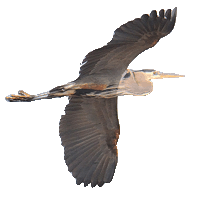
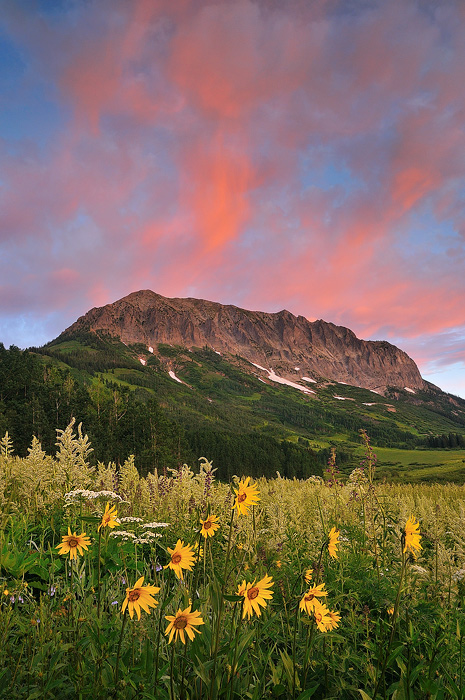
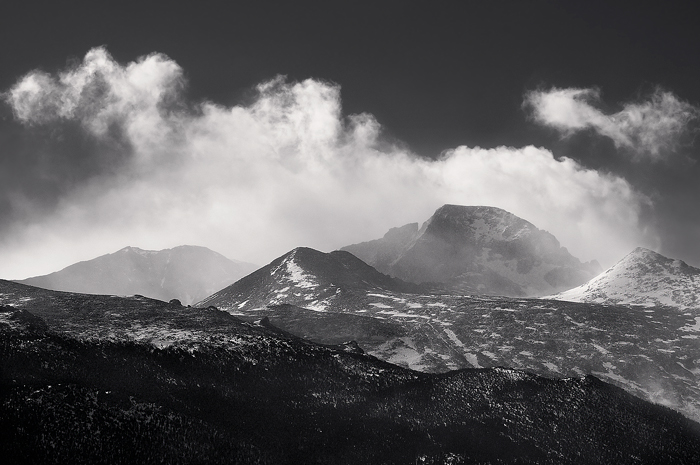
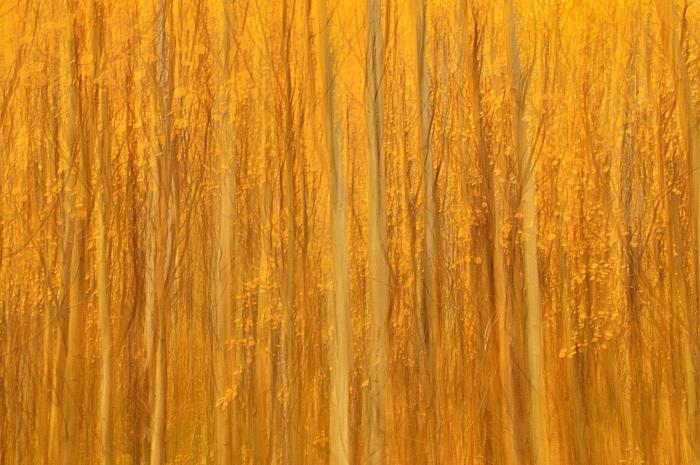
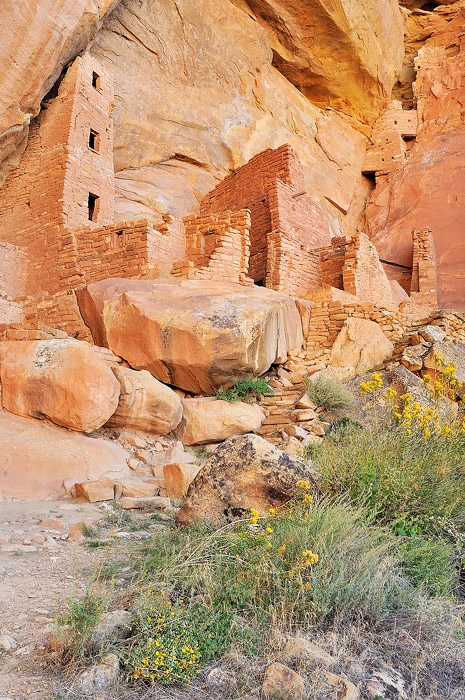

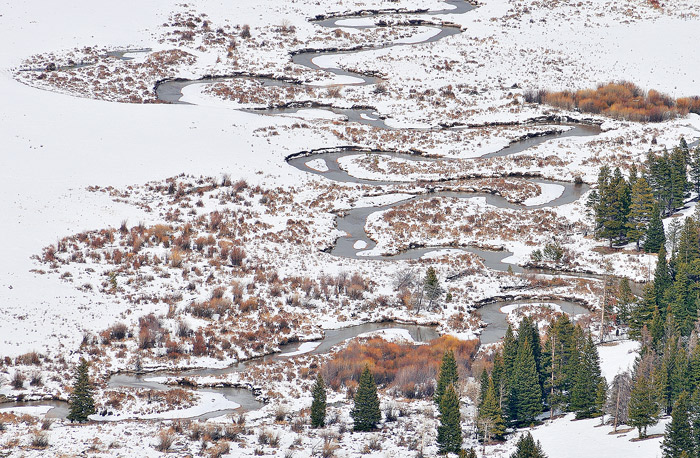
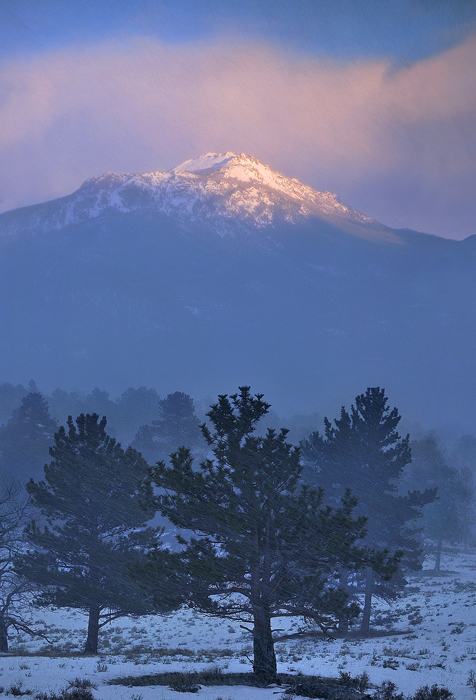
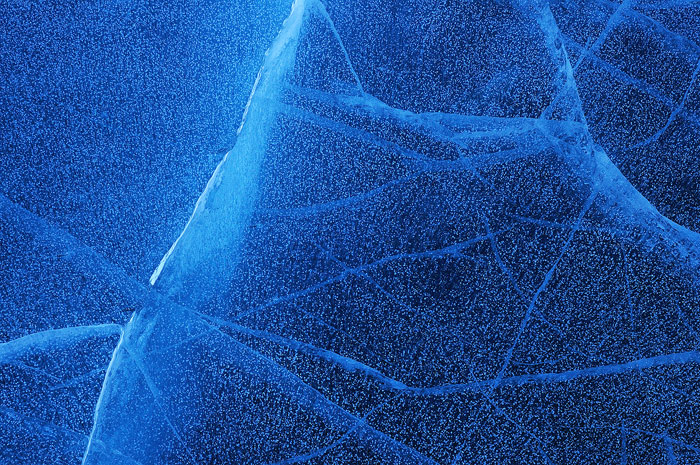
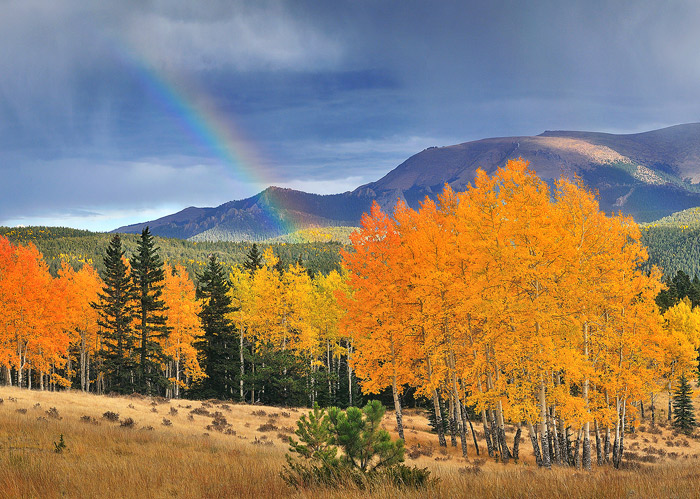
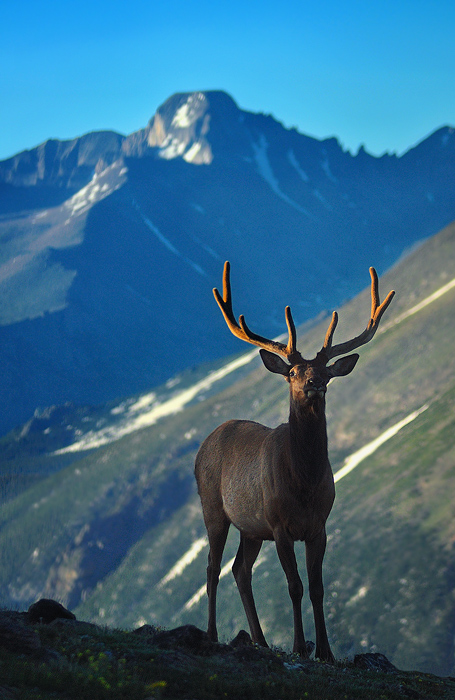
 Categories:
Categories: 
Recent Comments